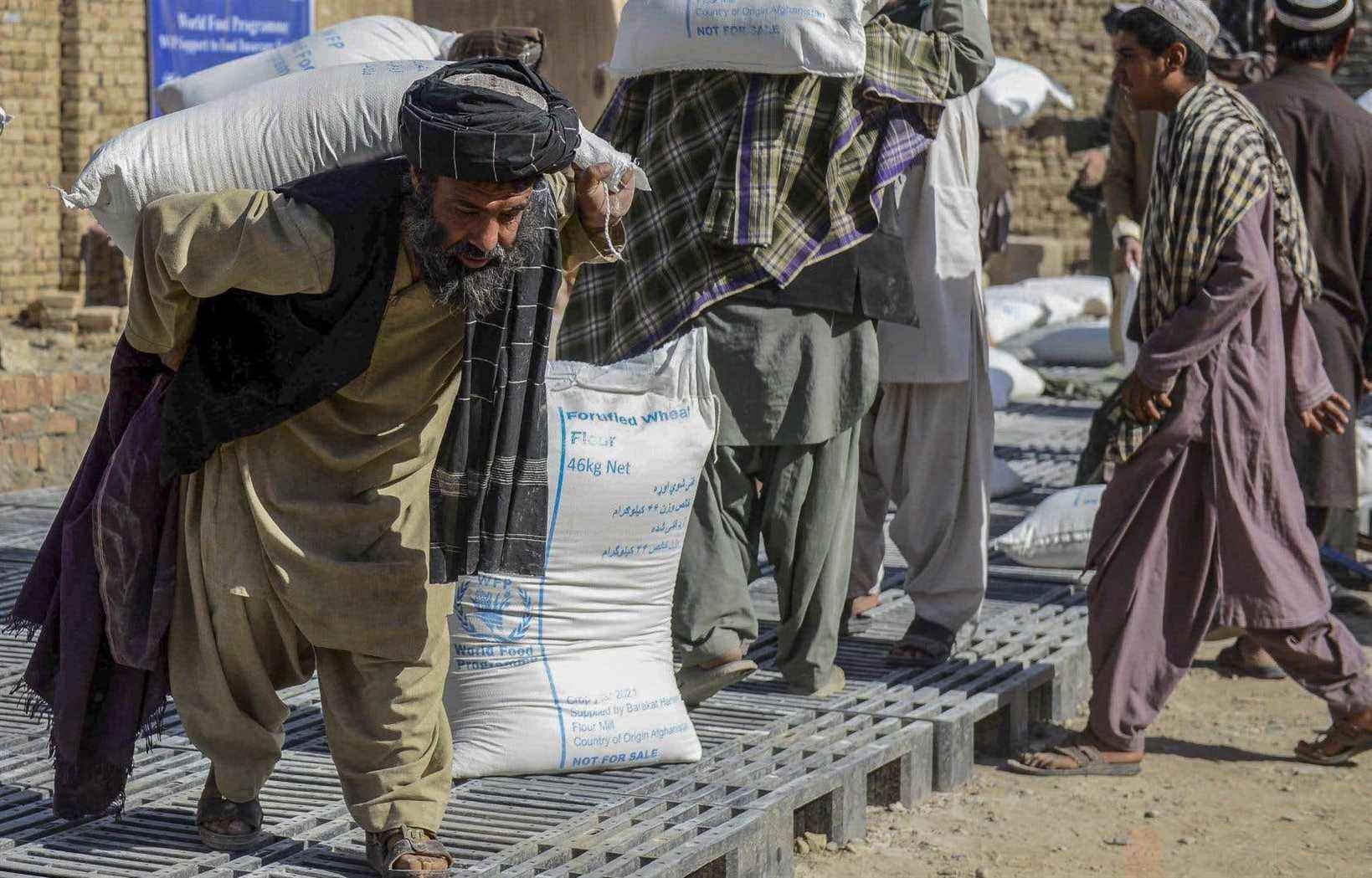Afghanistan is on the brink of one of the world’s worst humanitarian crises, as more than half of its population will be acutely food insecure this winter, UN agencies warned on Monday.
Some 22.8 million Afghans will be starved of food in the coming months, under the combined effects of the drought caused by global warming and the economic crisis, made worse by the Taliban takeover in August.
“This winter, millions of Afghans will be forced to choose between migrating or starving to death, unless we can step up our aid to save lives,” said David Beasley, Executive Director of the World Food Program (WFP). , in a statement issued jointly with the Food and Agriculture Organization of the United Nations (FAO).
The food crisis in Afghanistan is already more serious than those in Syria or Yemen, and only the Democratic Republic of Congo is in a more desperate situation, UN officials told AFP.
“Afghanistan is now among the worst humanitarian disasters in the world, if not the worst,” Beasley confirmed.
More than 50% of the Afghan population will be this winter at levels 3 (food crisis) and 4 (food emergency) of the international IPC scale.
Stage 3 is characterized by severe or unusual acute malnutrition, and stage 4 by very high acute malnutrition and excess mortality. The last stage (5) is that of famine.
This is the highest figure since the United Nations began analyzing this data in Afghanistan ten years ago.
” To survive “
“People who needed our help to live now need it to survive,” WFP deputy representative in Kabul, Hsiao-Wei Lee, told AFP.
Along with the cash distribution, oil, flour and seeds are part of the emergency aid distributed across the country by WFP and its local partners, she said.
“If we do not manage to help them, they will fall into a situation of famine”, she warned.
According to the WFP, 37% more Afghans have fallen into acute food insecurity compared to April 2021. Among them, 3.2 million children under five will suffer from acute malnutrition by the end of the year. ‘year.
Afghanistan is devastated by more than four decades of conflict and suffers from the consequences of global warming, the source of severe droughts in 2018 and 2021.
Its economy has stalled since the Taliban came to power, which led the international community to freeze the aid on which it relied heavily.
In the west of the country, thousands of families have already sold what was left of their drought-decimated herds and moved to camps for the displaced.
“The fields are destroyed, the animals have nothing to eat,” Haji Jamal, an old man from the district of Bala Murghab, in the province of Badghis, told AFP. “In the past two years, six people have died of starvation. “
Need hundreds of millions of dollars
Families go so far as to marry their underage daughters for money to subsist, according to testimonies collected by AFP.
“International humanitarian aid has arrived,” Taliban government spokesman Zabihullah Mujahid told AFP on Sunday.
“We are trying to organize it and distribute it. This includes food and clothing. All the problems will be solved, ”he said, banking on the possibility of a less dry winter this year.
Very worried as winter approaches, UN agencies have warned that their humanitarian response will be affected by the lack of resources. So far, they have only received a third of the funds they need.
The international community has pledged hundreds of millions of dollars in aid, but is looking for a mechanism to disburse this money directly, without going through the Taliban government.
FAO urgently needs US $ 11.4 million (CA $ 14.1 million) and is seeking an additional US $ 200 million for the 2022 agricultural season.
“Hunger is increasing and children are dying. We cannot feed people with promises. Financial commitments need to turn into real money, ”concluded Mr. Beasley.
